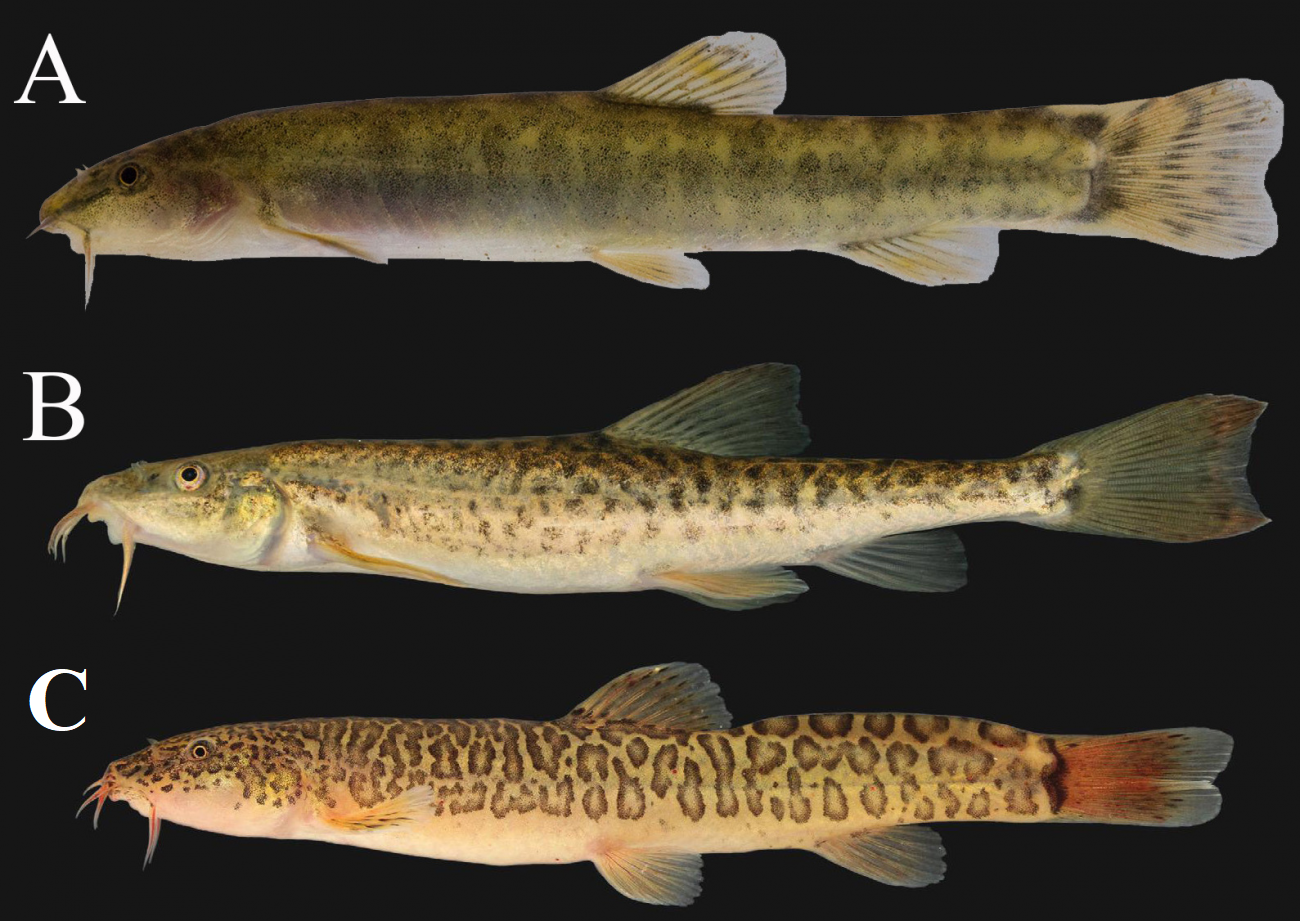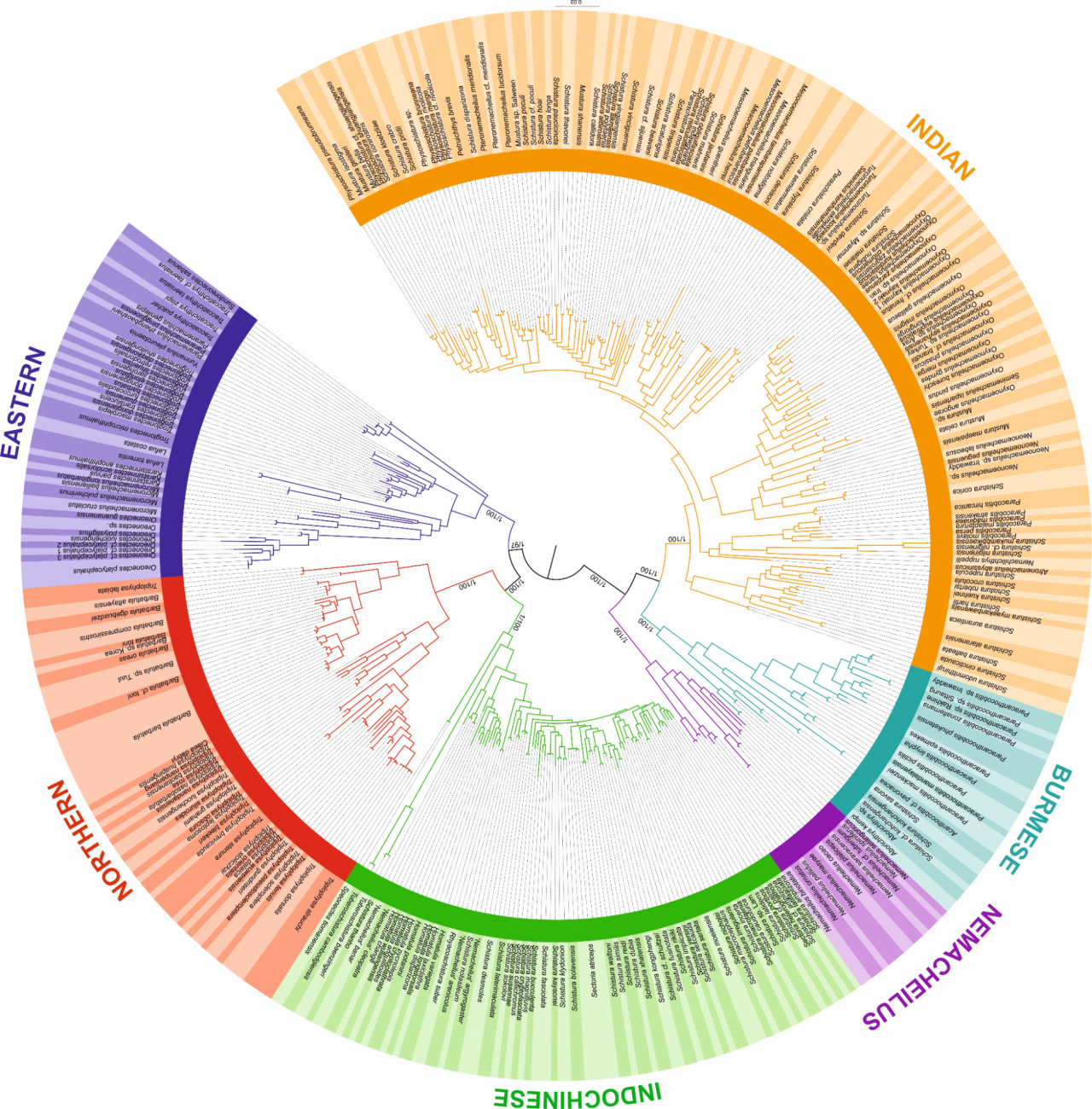
An international team of scientists has reconstructed the evolutionary history of one of the most diversified families of freshwater fish (Nemacheildae – stone loaches), common in Eurasia and Africa. The work involved the staff of the Laboratory of Ecology of Lower Vertebrates of the A.N. Severtsov Institute of Ecology and Evolution of the Russian Academy of Sciences (IEE RAS) – Senior Researcher A.S. Golubtsov and Leading Researcher B.A. Levin.
The study covered 471 fish specimens from 250 species from 37 genera, conducting molecular genetic analysis of 6 DNA markers. The Nemacheildae family was chosen as a model for assessing the evolution of Eurasian freshwater fishes due to its high species diversity (about 840 species) and unusually wide geographic distribution – from Spain to Japan and from Russia to Indonesia. Moreover, the stone loaches even penetrated into East Africa, where they evolved into a separate genus – Afronemacheilus, which lives in the waters of the Ethiopian Highlands. The ecology of stone loach is no less diverse. Among them, there are species adapted to living deep under the surface of the earth in caves and possessing troglomorphic specialization. Thus, the most underground fish species Triplophysa gejiuensis is noted at depths of up to 400 m below the surface of the earth. It is noteworthy that the highest “ascended to the sky” fish species also belongs to this family – this is the high-mountain Tibetan char Triplophysa stolickai, which is noted at altitudes of 5200 m above sea level.

Fig. 2. Phylogenetic tree of the family Nemacheilidae, including 471 specimens analyzed by 6 DNA markers (from the published article - https://elifesciences.org/reviewed-preprints/101080).
The study shed light on the phylogeny, evolutionary history and biogeography of a large group of freshwater fish and, using it as an example, showed which factors contributed to the diversification of the freshwater fauna of this region since the Eocene. In particular, it was shown that the stone loaches originated approximately 45-50 million years ago in the Indochina Peninsula. Diversification into the main large evolutionary lines of the family occurred quite quickly - Southern, Burmese, Sunda, Indochina, Northern and Eastern.
"The expansion of the stone loach family was facilitated by tectonic processes, favorable climatic conditions since the Eocene and mountain building processes. In particular, favorable climate and plate tectonics contributed to the dispersal of the Eurasian family to the African continent in the late Miocene," said B.A. Levin, leading researcher at the IEE RAS.
Subsequently, the aridization of the Arabian Peninsula led to a significant extinction of aquatic fauna, which created a large gap in the distribution of representatives of the family, but contributed to the genesis of a new line of African loaches of the generic level (Afronemacheilus) - the only representative of the family in Africa.
The results of this work will be of interest to evolutionary biologists, ichthyologists, paleontologists and other specialists, as well as biology enthusiasts.
The study was published in the prestigious international journal eLife (https://elifesciences.org/reviewed-preprints/101080) and supported by the grant of the Russian Science Foundation 24-44-20019 (Fish of the Caspian basin: genetic diversity, evolution and biogeography). Šlechtová, V., Dvořák, T., Freyhof, J., Kottelat, M., Levin, B., Golubtsov, A., Šlechta, V. & Bohlen, J. (2025). Reconstructing the phylogeny and evolutionary history of freshwater fishes (Nemacheilidae) across Eurasia since early Eocene. eLife, 13.
